Image Credit: Tesla
Image Credit: Tesla Tesla posted this graph showing the cost of its non-solar tile in comparison with other roofing choices.
Tesla has now answered one of the big remaining questions about its textured glass Solar Roof — just how much will it cost? — and the estimates show some homeowners could benefit financially over time despite substantial upfront costs, according to an analysis published by Consumer Reports.
CEO Elon Musk promised last fall that the innovative roofing tiles, which can be made to look like one of several roof coverings, would cost less than a conventional roof.
Did Tesla deliver? Broadly speaking, it looks like it. But there are many assumptions included in the mix. Consumer Reports said last fall that a Solar Roof would have to cost no more than $24.50 per square foot to beat the cost of an asphalt roof for an average house. Tesla’s current estimate for the same house sets the cost of the roof at $21.85 per square foot, just about 11% less than the Consumer Reports limit.
The analysis was based on the value of 30 years’ worth of electricity. (Consumer Reports explained the assumptions it made in an article published last November.)
It’s also worth noting that Musk claimed last fall the solar roof would cost less to manufacture and install than a conventional roof, even without accounting for the electricity it produced. “Electricity is just a bonus,” he said. That’s clearly not the case.
The basics
A Solar Roof uses two types of tiles, which both look the same. One type produces electricity; the other doesn’t. Depending on where the house is located, the mix of solar to non-solar tiles allowing the home to be completely powered by solar electricity will vary. That ratio also affects the total cost of the installation. Estimates also include the cost of a Powerwall 2.0 (13.5 kWh) battery, which comes with a 10-year warranty.
Tesla has provided a cost calculator allowing homeowners to plug in a few basics about their home and get an estimate of how much the installed roof would cost and the value of the power it is expected to produce over 30 years (the warranty period for solar production.)
Homeowners may order tiles with either a smooth or textured glass surface. Tiles made to look like slate and terra cotta will not be available until next year.
Tiles come with a warranty described by Tesla as “infinity, or the lifetime of your house, whichever comes first,” while power and weatherization (no leaks) each have a 30-year guarantee. Tiles can be installed on a roof with a pitch of 3:12 or greater.
If you want to place an order, you will be asked to place a refundable deposit of $1,000. Tesla says installations will start in California in June, “rolling out to additional markets over time.” Installations will be on a first come, first served basis.
Three houses, three cost estimates
To test Tesla’s claims, Consumer Reports ran the numbers for three houses — one in Yonkers, New York, one in a Houston, Texas, suburb, and the last in Thousand Oaks, California.
The most compelling case for a Solar Roof came from the California house. Tesla recommended a 50-50 split between solar and non-solar tiles, with the 1,878 square feet of roofing and the Powerwall battery costing $56,800. Because the roof would generate an estimated $84,700 in electricity, the homeowner would recoup $41,800 over 30 years (the estimate includes a $13,900 federal tax credit).
Texas didn’t do so well. The two-story, 4,467-square-foot house also would get a roof with 50% solar tiles, which would generate $46,800 in electricity over 30 years. But the size of the house and the fact it would need air conditioning 300 days per year means that the homeowner would be out $13,500 after 30 years. The roof plus Powerwalls (two of them in this case) would cost a total of $97,700.
In Yonkers, the 2,700-square-foot house would need 70% solar roofing tiles and a single Powerwall battery. The upfront cost would be $45,400, but in the end the homeowners would net $13,900 if they lived there for 30 years and all of the other assumptions the calculator makes hold true.
Tesla recommends a Powerwall battery as part of the package. But in states with net-metering, where homeowners are paid the full retail rate for excess electricity they send to the grid, it might be more economical to skip the Powerwall, providing the homeowners aren’t concerned about an occasional power outage.
What we still don’t know
Homeowners who buy a Solar Roof are paying for 30 years of electricity upfront, but most of them will move long before that. The National Association of Home Builders says that owners of single-family homes on average move every 13 years — less than half the tenure that would be required to see the financial gain in Tesla’s calculator.
Electricity costs over time, the impact on property taxes, interest rates, even shading from trees on the lot or nearby buildings are all variables that would affect the financial outcome over a 30-year stretch.
Tesla has published some information about the tiles, including hail, wind, and fire ratings. We know that each tile is 14 inches long and roughly 8 5/8 inches wide.
But Tesla hasn’t said anything about the output of the solar tiles, how they are wired, and even what type of solar cell is beneath the textured glass surface. Does each tile have its own electrical connection — meaning hundreds or thousands of individual junctions on each roof — or will tiles somehow be ganged together to reduce the number of connections that must be made (and potentially repaired)?
“We are not yet sharing the specific technical details you’ve requested,” a Tesla spokeswoman said in an email.
A lack of information also makes it difficult to compare the cost of a Solar Roof with a conventional rooftop solar installation. In order to make an apples-to-apples comparison, homeowners would have to know the capacity (in kW) of the Tesla roof so they could get bids on a racked solar array of the same capacity from a local installer. Tesla doesn’t provide that information.
Plus, homeowners have other options if they want something other than conventional panels in racks attached to the roof. There is GAF’s recently announced entry into the market, Tesla’s own low-profile solar panels, and SolarSkin panels from Sistine Solar, which are installed on racks like conventional solar arrays but manufactured so they have the appearance of any material the homeowner chooses.
No matter how the number-crunching goes, Tesla hopes that homeowners will find the appearance of the tiles to be a major draw. How quickly are the orders coming in? The company isn’t saying. “We are not providing updates on orders at this time,” a spokeswoman said.
Weekly Newsletter
Get building science and energy efficiency advice, plus special offers, in your inbox.

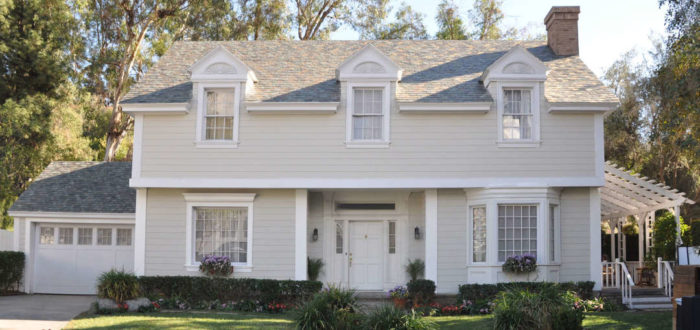




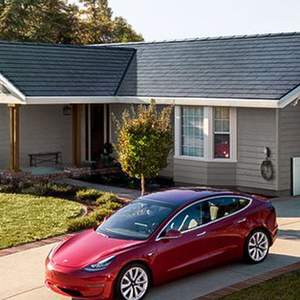
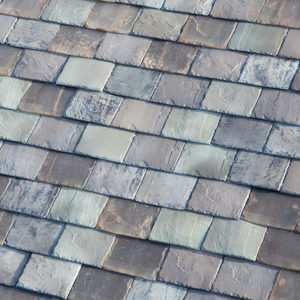
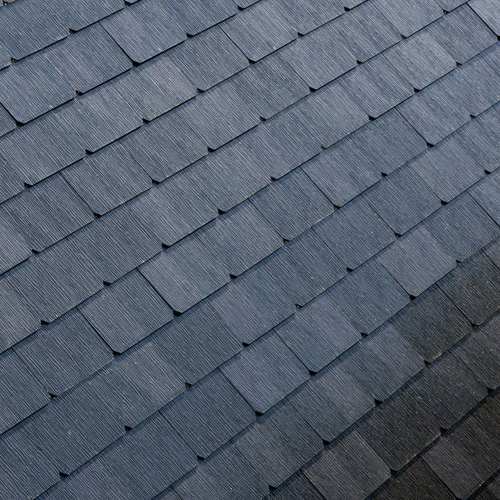
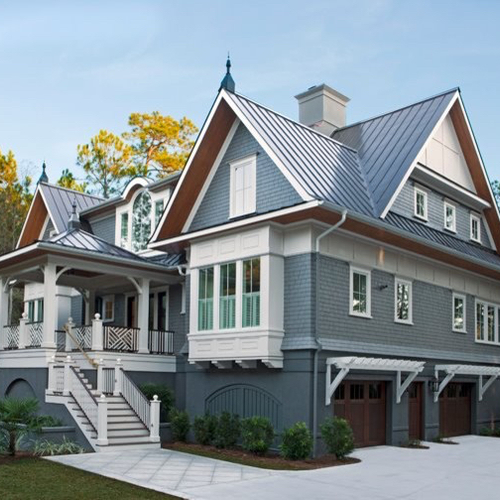






6 Comments
Note, this is not a "walkable" roofing type.
In high snow-load zones or roof lines with inherent snow traps that may need manual snow removal (for structural, not just PV output reasons) at some point in the next 30 years, this system isn't going to work out. Old-school rack mounted panels with sufficient walkable roof area around it for performing those snow removal tasks are going to be a better bet.
Maintenance
Since PV panels require maintenance (periodic cleaning in summer, snow removal winter), spreading your solar array over a larger portion of your roof will increase the size of your maintained area, or simply decrease the performance of the PV array if the maintenance isn't kept up. I can imagine quite a bit of crud building up on these tiles on low slope roofs, and snow covering them completely in colder climates.
The people who don't like the look of traditional PV panels are probably the same ones who won't take up the habit of shoveling their roofs. Might work well on the south side of a 12/12 pitch.
Maintenance???
PV panels don't REQUIRE maintenance. I've never met anyone who cleaned their PVs in summer (I certainly haven't in the 36 years we have used them), and you can remove snow if you don't want to miss a day or two of winter energy output, but no one that I know with rooftop PVs worries about clearing snow off.
Not Walkable?
That's a huge problem anywhere. How would you install the siding or apply finishes to the dormers on that roof? re-point the chimney, scare kids on halloween? I'm on my roof a lot.
Walkability and maintenance
I agree with Jim Erdman: There is no such thing as PV maintenance. I never wash my PV modules. (That said, I am an example of a rare breed: a homeowner who removes snow from his roof-mounted PV modules. I do that because I live off-grid, and I need every kWh I can gather during the winter. But the work is optional, and the vast majority of Americans with PV systems don't do it, because the lost electricity isn't worth much if you live in a grid-connected house.)
Dana Dorsett and Malcolm Taylor are worried about walkability, but it's not clear to me whether their concerns are warranted. Dana, do you have a source for this information? I certainly have no idea whether this type of roofing is walkable. I'll say this, though: many types of clay tile roofing and concrete tile roofing are tricky (or impossible) to walk on, and yet such roofing is routinely installed in parts of California and the Southwest.
Quoting Musk ...
From Elon Musk's Twitter feed ...
………………
8:56 PM - 28 Oct 2016
Musk: "Should mention that the Tesla solar roof is robust against any weather, incl heavy hail. Also, higher insulating value than a standard roof."
Question: "can one walk on roof like regular asphalt shingles?"
Musk: "yes"
………………..
9:15 PM - 28 Oct 2016
Musk: "Solar glass tiles can also incorporate heating elements, like rear defroster on a car, to clear roof of snow and keep generating energy"
Question: "won’t it be energy intensive to melt the snow? Would it be net positive?"
Musk: "strongly net positive"
Log in or create an account to post a comment.
Sign up Log in